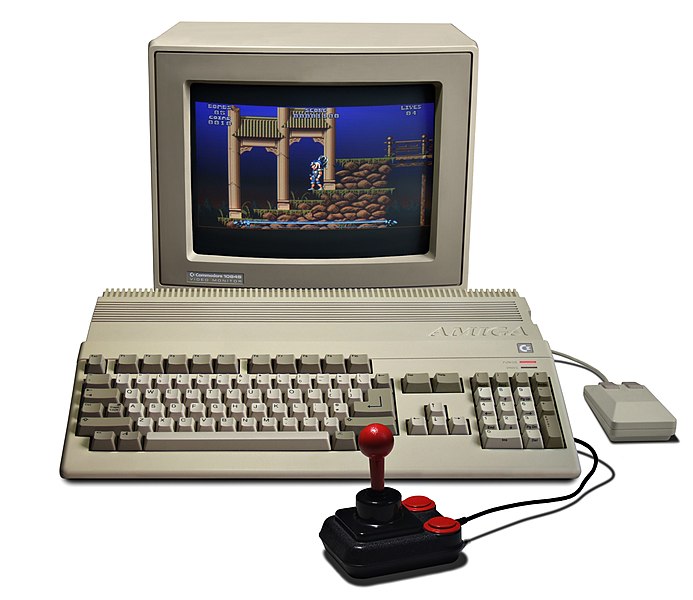History of video games/Platforms/Amiga
-
An Amiga 500 configured for games.
History
[edit | edit source]Launch
[edit | edit source]The Commodore Amiga 1000 was launched in 1985 for $1,295.[1]At the launch of the Amiga, artist Andy Warhol promoted the capabilities of the system for use in art.[2]
The cost reduced low end Amiga 500 followed in 1987.[3]
Use by creatives
[edit | edit source]Many game developer studios such as Psygnosis and Sensible Software got their start developing games for the Amiga.[4] To keep publishers updated before the proliferation of the internet, Amiga Developer Krister Karlsson recounted sending VHS tapes and floppy disks to his publisher in the mail.[5]
Other developers used the audio and graphical capabilities of the Amiga to develop games for other platforms. Junichi Masuda used an Amiga when creating the music for Pokémon Gold and Silver.[6]
Technology
[edit | edit source]Specs are for the Amiga 1000. Following models had different specs.
Compute
[edit | edit source]The Amiga 1000 is powered by the 16 bit Motorola 68000 clocked at 7.14 megahertz.[7][8]
The Amiga 1000 has 256 kilobytes of RAM by default.[8][7]
Software
[edit | edit source] |
|
| Problems listening to this file? See media help. | |
Amiga computers ran the Amiga Workbench operating system, with Amiga Workbench 1.0 released in October 1985 with powerful multitasking and graphical capabilities.[9][10]
Gallery
[edit | edit source]References
[edit | edit source]- ↑ Comen, Evan. "Check out how much a computer cost the year you were born". USA TODAY. Retrieved 27 November 2020.
- ↑ McCormick, Rich (24 April 2014). "Andy Warhol's Amiga computer art found 30 years later". The Verge. Retrieved 28 November 2020.
- ↑ "Commodore Amiga 500 Personal Computer". National Museum of American History. Retrieved 28 November 2020.
- ↑ "I'll Never Love a Computer Like I Loved the Commodore Amiga". www.vice.com. Retrieved 28 November 2020.
- ↑ "Making a game in 1993". www.gamasutra.com. Retrieved 28 November 2020.
- ↑ "HIDDEN POWER of masuda". web.archive.org. 23 November 2013. Retrieved 28 November 2020.
- ↑ a b "Commodore Amiga 1000 computer". oldcomputers.net. Retrieved 28 November 2020.
- ↑ a b "OLD-COMPUTERS.COM : The Museum". www.old-computers.com. Retrieved 28 November 2020.
- ↑ "History of AmigaOS". AmigaOS. 28 May 2011. Retrieved 27 November 2020.
- ↑ "AmigaOS far ahead of its contemporaries from 1985 until 1990". GenerationAmiga.com. Retrieved 27 November 2020.





